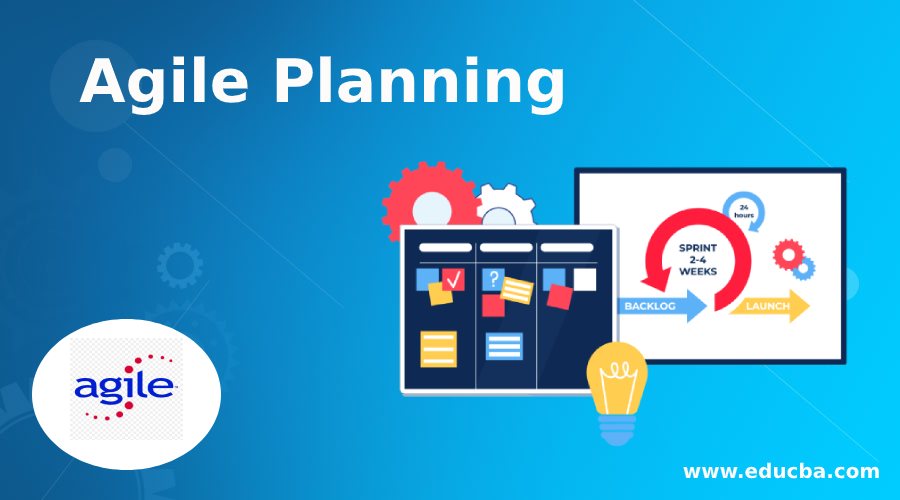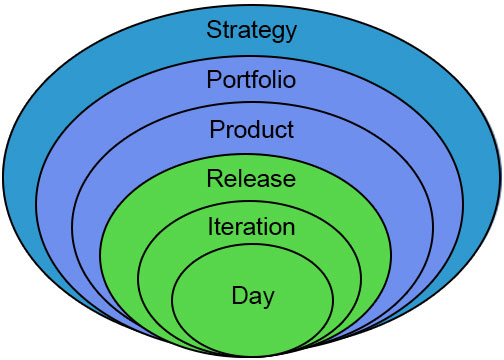
Introduction to Agile Planning
Agile planning can be defined as a methodology that measures work speed through independent work teams termed ‘Sprints’ or ‘Iterations.’ Sprints are work tasks allocated to the teams lasting for a duration of 2-4 weeks. The role of Agile planning is to define and assign respective tasks to many such multiple sprints. It thus facilitates the learning process and helps the teams to determine attainable goals. Agile and planning are like antonyms! Can planning and agile go together? It is often said that agile teams don’t really plan. However, as many organizations have embraced agile practices, one of the key determiners of successful agile implementation is its approach towards ‘planning.’
What are the Attributes of ‘Agile Planning’?
Given below are the attributes of agile planning:
- Typically, an Agile Plan Includes ‘Releases’ and ‘Sprints’: When a new product is launched or if a running product is upgraded, it is termed a ‘Release’ in Agile planning. Such defined releases are segregated into multiple sprints. Each sprint team receives an allocation of pre-listed tasks that they must complete within a duration of 2-4 weeks. These listed tasks are titled User Stories.
- ‘User Stories’ – Blueprint for Planning: In Agile, User Stories are the needs enlisted by the users. The sprint team identifies strategies for meeting these specific requirements in the best possible ways.
- Agile Planning is Repetitive and Progressive: The concept of Agile planning is repetitive. The sprint teams repeat the processes, which enables them to forecast how many user stories can be completed in a particular duration. It also anticipates any problems or issues that could cause hurdles to a project’s success.
- Estimation is Exclusive of the Management: Fundamentally, it is based on team participation. Unlike traditional project management, the management does not assign tasks. The sprint team itself defines the user stories. Additionally, mastering how to conduct PI planning can significantly enhance the effectiveness of agile frameworks. PI Planning fosters strategic collaboration among all sprint teams, negating potential roadblocks early and streamlining sprint goals to align with high-level organizational objectives.
Understanding the ‘Agile Onion’
Unlike traditional project planning, Agile plans frequently and do not rely on comprehensive planning. There are six stages to Agile planning.
The Agile Onion, basically, denotes the six levels in planning:
- Strategy Planning Stage: The organization designs and develops the route map to attain the desired goals or objectives. It involves planning and executing strategies to achieve the targeted results within around 3 to 5 years.
- Portfolio Planning Stage: This stage involves developing a set of products that align with the organization’s strategic objectives.
- Product Planning Stage: At this stage, the product owner plans for the number of releases of a specific product. This product planning stage is in alignment with the portfolio stage.
- Release Planning Stage: At this planning stage, the scrum teams work collaboratively on the decided scope of a product or the release date. Thus, it plans for the forthcoming product release and is in the thread of the product plan.
- Iteration Planning Stage: At this level, the teams are assigned different tasks to execute from the release plan and are termed ‘Sprint Planning.’ Thus, it is in conjunction with the release stage of planning.
- Daily Planning Stage: As the name implies, teams make decisions regarding the day-to-day tasks to be executed at this stage. Again, this stage aligns with the Iteration stage and enables the team to evaluate how closely they are to their targets and enables them to modify the plans if necessary.
Thus, the Agile Planning Onion is an effective way to summarize the different stages in planning and how each step is in conjunction with the other. It provides a broader view of the reasons behind specific decisions.
Types
The following are types of Agile planning:
- Theme: It is a targeted goal that aims to bring organizational change.
- User Stories: These are the needs or requisites defined by the product users.
- Backlog: This is a set of user stories and inoperable requisites that could be executed soon.
- Backlog Refinement: As the name suggests, it is about upgrading user stories and eliminating irrelevant ones.
- Epics: Epics are a collection of multiple user stories. To implement these user stories, teams design Epics utilizing product structure, designs, and route maps. Epics are a subset of Themes.
- Sprint Planning: Sprints are tasks assigned to multiple teams for a certain duration. It consists of ‘Sprint goal’ and ‘sprint backlog.’ The Sprint goal consists of a goal statement the sprint teams aim to attain. The sprint backlog consists of a set of user stories and actionable requirements that the sprint teams will execute. At this stage, organizations identify the relevant set of work that aligns with their current objectives and resources.
- Release Planning: This includes planning for multiple sprints. During release planning, companies typically develop around 3-12 iterations. It is also a basis for tracking the progress of the project.
The key notion of planning is prioritizing essential tasks and adapting to change. It is all about teamwork and collaboration. Unlike waterfall project planning, agile teams are responsible for choosing features from the backlog and directing the project toward the targeted goal. In Agile, the team owns the plan and is solely responsible for meeting plan deadlines. Companies in the software sector predominantly apply Agile, which allows for progressive upgrades. However, it may not apply to the manufacturing sector, which requires huge planning instead of upgrades here and there.
Recommended Articles
This has been a guide to Agile Planning. Here we discussed the concept, attributes, understanding, and types of planning in Agile. You can also go through our other Suggested Articles to learn more –


